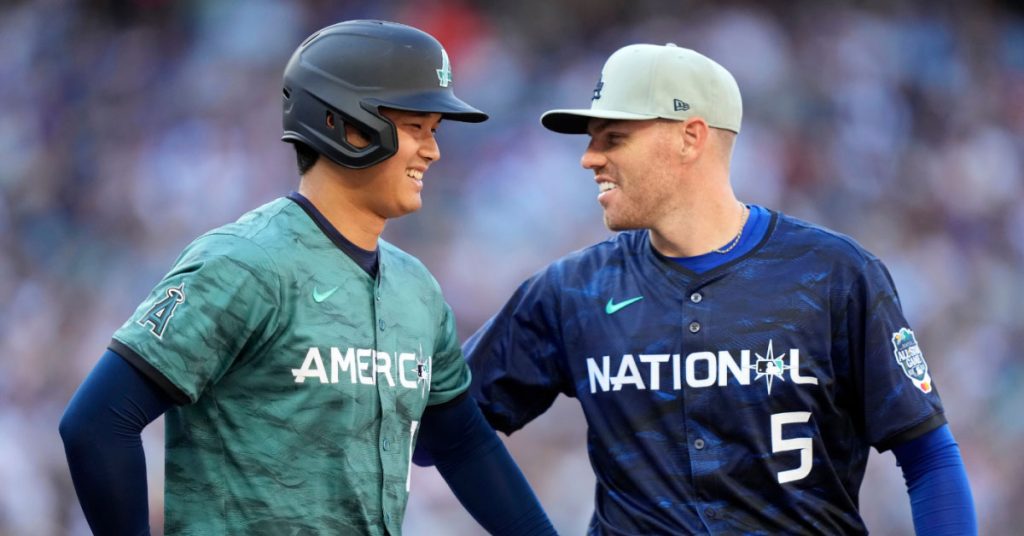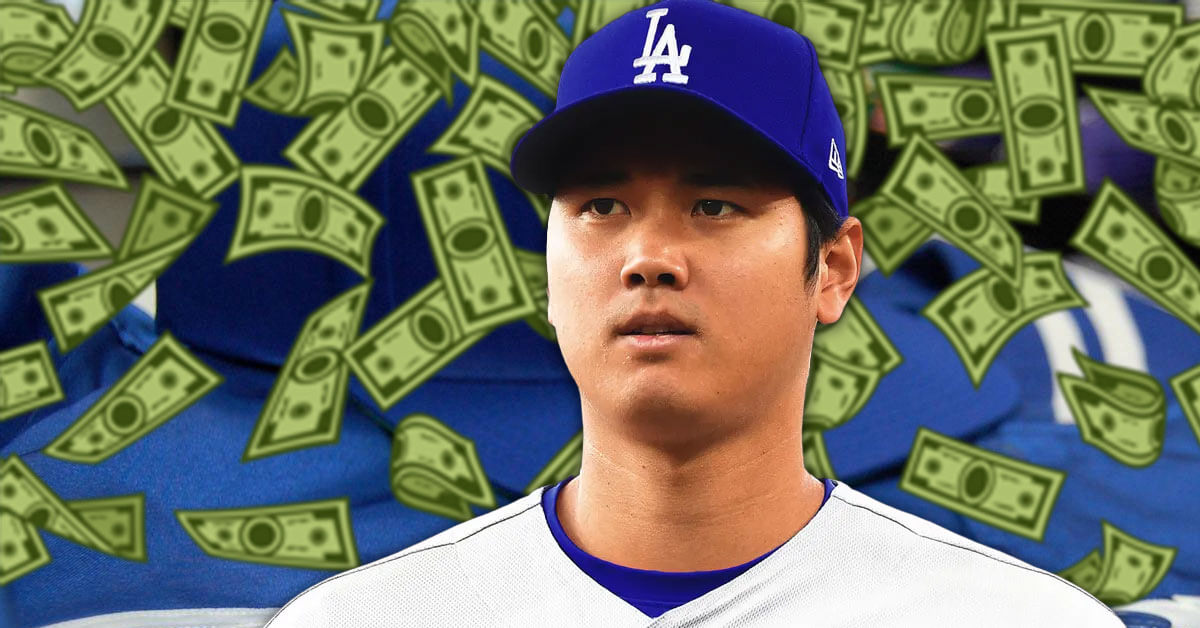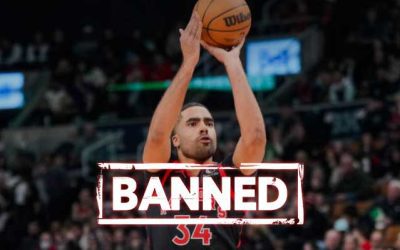Shohei Ohtani and his deferred contract with the Los Angeles Dodgers stands out as a groundbreaking development in the realm of professional baseball. Valued at an astounding $700 million, this unprecedented agreement has captured the attention of fans and analysts alike. What sets it apart is the innovative approach to compensation, with a significant portion of Ohtani’s earnings being deferred over an extended period. This unconventional strategy introduces a new dimension to player contracts, raising questions about its long-term impact on the financial dynamics of the sport. The deferred structure not only secures Ohtani’s financial future but also prompts a broader conversation about how teams structure deals in the evolving landscape of professional baseball. As the first of its kind, Shohei Ohtani and his deferred contract marks a pivotal moment, potentially influencing future negotiations and reshaping the traditional norms of player compensation in the league.
In a nutshell, here is what Shohei Ohtani and his deferred contract with the the Dodgers looks like:
2024:$2M
2025: $2M
2026: $2M
2027: $2M
2028: $2M
2029: $2M
2030: $2M
2031: $2M
2032: $2M
2033: $2M
2034: $68M
2035: $68M
2036: $68M
2037: $68M
2038: $68M
2039: $68M
2040: $68M
2041: $68M
2042: $68M
2043: $68M
Why is Shohei Ohtani so popular? We explore this answer here.

In a groundbreaking move that has sent shockwaves through the baseball world, Shohei Ohtani, the dynamic two-way star, has inked a record-setting 10-year, $700 million deal with the Los Angeles Dodgers. However, the contract’s unique structure, featuring unprecedented deferrals, has ignited a passionate discussion among fans, raising questions about fairness, legality, and the impact on the competitive balance of the league.
The deal, disclosed by sources familiar with the negotiations, reveals that Ohtani, to support the Dodgers’ ability to maintain a competitive roster around star players like himself, Mookie Betts, and Freddie Freeman, has agreed to defer all but $2 million of his annual salary. This means that $68 million of his $70 million per year will be deferred until after the completion of the contract, to be paid out without interest from 2034 to 2043.
These deferrals, previously unreported and suggested by Ohtani himself during negotiations, were instrumental in pushing the total value of the contract to $700 million. The deal, currently pending finalization, introduces an unusual structure intended to provide the Dodgers with increased cash flow and payroll flexibility, allowing them to remain competitive in the market for top-tier talent.
While Ohtani continues to rake in significant earnings from endorsements and off-the-field ventures, estimated at $50 million annually, the deferred payments grant the Dodgers extra room to navigate the competitive balance tax (CBT), commonly known as the luxury tax. For CBT purposes, the expected average annual value (AAV) of the contract is reported to be around $46 million per year, making it the highest in MLB history.
The structure of Ohtani’s deal invites discussions around the Collective Bargaining Agreement (CBA), which stipulates that there is no limit on how much salary a player and team can agree to defer. The CBA also includes a net-present-value calculation for luxury-tax purposes, determining the value of a player’s contract on a season-by-season basis. In Ohtani’s case, this calculation results in an AAV of $46 million.
Over the 10 years he is set to play for the Dodgers, Ohtani’s deal, for CBT purposes, is perceived as having an average annual value of $46 million. However, considering the full 20-year lifespan of the contract, including the subsequent 10 years when the deferred payments are made, Ohtani is set to earn a total of $700 million. The even distribution of payments throughout the two 10-year periods means Ohtani will receive $2 million annually from 2024 to 2033 and $68 million annually from 2034 to 2043.
Shohei Ohtani Deferred Contract Fan Reactions and Controversy
News of Ohtani’s groundbreaking contract has stirred up a storm of reactions among fans, with emotions ranging from disbelief to outrage. A user on an online forum expressed their astonishment, questioning if Ohtani would only make $20 million within the next 10 years. The comment received over a thousand upvotes, indicating widespread confusion and surprise among fans.
Another fan, using a humorous tone, commented that Ohtani must be “poor” despite signing a record-breaking contract, highlighting the perceived absurdity of deferring such a significant portion of the salary. This sentiment was echoed by many others, emphasizing the unconventional nature of the deal.
Amid the fan discussion, one user pointed out that Ohtani’s annual endorsements and off-field earnings, totaling $50 million, would compensate for the deferred payments, emphasizing the financial security Ohtani enjoys outside of his baseball salary. The fan humorously added that Ohtani’s family would be well-off “until the sun explodes.”
Shohei Ohtani Deferred Contract Comparisons and Questions
Some fans couldn’t help but draw comparisons to other players’ salaries, with one user expressing disbelief that Ohtani’s 2024 salary would be half of another player’s salary. The article clarified that, for CBT purposes, Ohtani’s cap hit is approximately $46 million per year, sparking discussions about the impact of the deal on the competitive landscape.
Fan reactions ranged from amazement at the unprecedented nature of Ohtani’s contract to concerns about its legality and fairness. Some questioned whether the league and the players’ union would approve of such a deal, with one user comparing it to the “farce” of playing with the luxury tax.
Take Bobby Bonilla for example. Bonilla, a former Major League Baseball player, gained notoriety for his unique and long-lasting financial arrangement with the New York Mets. In a deal negotiated in 1999, the Mets agreed to buy out the remaining $5.9 million on Bonilla’s contract, deferring payments and arranging for him to receive an annual sum, starting in 2011 and continuing until 2035. This creative financial maneuver allowed the Mets to allocate resources differently at the time, while Bonilla secured a substantial and enduring income stream. Often cited as one of the most unusual contracts in sports history, the “Bobby Bonilla Day” on July 1st has become an annual reminder of this unconventional agreement, sparking conversations about financial strategies and player contracts in professional sports.
Shohei Ohtani Deferred Contract Revolutionary or Unsettling?
While some fans marveled at the revolutionary nature of Ohtani’s contract, likening it to the cap manipulation seen in other sports, others expressed concern about the potential ramifications on the league’s financial structure. A fan pointed out that this contract would be studied in history books for decades, drawing parallels to other instances of groundbreaking deals in sports history.
The discussion also delved into the legality and ethics of the contract. Fans raised questions about whether such a deal should be allowed and if it violated the spirit of the luxury tax rules. Some fans even called for intervention from the league, suggesting that a contract of this nature could lead to an imbalance in the competitive landscape.
Looking Ahead: Dodgers’ Pursuit of Talent
Despite the ongoing discussions and debates among fans, the Dodgers, according to reports, are actively pursuing additional talent in the free-agent market. Japanese right-hander Yoshinobu Yamamoto and Tampa Bay Rays right-hander Tyler Glasnow are among the reported targets for the Dodgers.
The team’s pursuit of additional pitching talent raises questions about how Ohtani’s contract, with its unique deferred structure, might impact the Dodgers’ ability to build a well-rounded and competitive roster. Fans are closely watching how the team manages its financial resources to maintain competitiveness and contend for championships throughout Ohtani’s tenure.
In Conclusion
Shohei Ohtani’s historic contract with the Los Angeles Dodgers has not only shattered records but has also ignited a firestorm of debate and discussion among fans. The unique deferral structure, unprecedented in baseball history, has sparked questions about fairness, legality, and the potential impact on the competitive balance of the league.
As the baseball community grapples with the implications of this groundbreaking deal, one thing is certain: Shohei Ohtani’s contract will be remembered as a pivotal moment in the evolution of baseball contracts, with far-reaching consequences for player negotiations, team finances, and the overall dynamics of the sport. Only time will reveal the true impact of this historic agreement on the future of baseball and its place in the annals of sports history.




